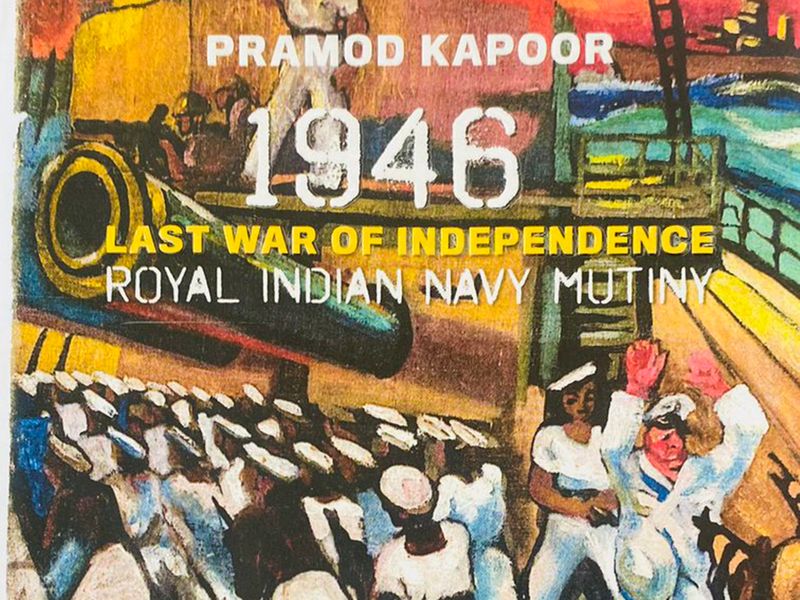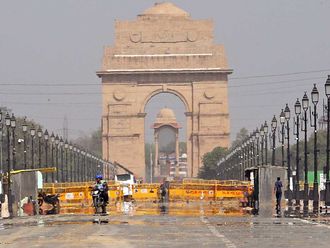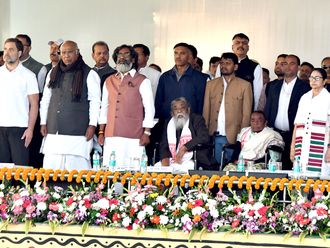
In a season of the revision of Indian history, a book by Pramod Kapoor on 1946 mutiny of Indian sailors (belonging to the Royal Navy), stirs the pot further.
1946 Royal Indian Navy Mutiny; Last War of Independence questions the Congress’ brand of politics. In the book, the party comes across as underplaying the importance of uprising of ordinary Indians soon after the country got its independence from the British.
Indian history is a treasure trove of many heroes and villians, most of which is hidden in the flow of time.
Kapoor, founder and publisher of Roli books, highlights an unprecedented and extraordinary uprising against the British colonial power. The historian, Rudrangshu Mukherjee credits Kapoor for transforming a footnote into a book.
Congress underplayed the mutiny
The author claims that the Congress party and historians during the Nehru era underplayed the mutiny.
In February 1946, ratings, as sailors were called then, mutinied against the Britishers. It was an open, mass revolt, inspired by Azad Hind Fauz and its founder Subhash Chandra Bose.
Aruna Asif Ali, Congress leader, few leaders of Muslim League and Communist Party leaders motivated and supported the sailors working in Royal Indian Navy.
It was an incredible act of defiance by ordinary Indian men on ships but it has been forgotten, says Kapoor.
The immediate reason for their anger was racial discrimination within the ranks of Royal Navy and the poor living conditions of the sailors who largely came from poor families. They were in the age group of 15-25.
The rebellion that started with writing of slogans ‘Down With the British’ on the ship Talwar, spread in two days when 20,000 Indian sailors took over 78 ships and 21 establishments. They replaced British flags with flags of the Congress, Mulsim League and Left parties.
The historian William Dalrymple claims Kapoor’s book sheds important new light on a thrilling and critically important but partly forgotten story and does so with great flair and panache.
Kapoor provides a lot of evidence on how the sailors and their supporters came out on the streets of Bombay. This created panic in the British establishment. In retaliatory police action, more than 400 people were killed and 1500 injured.
Film maker Shyam Benegal likens the 1946 sailor mutiny to the previous Sepoy Mutiny of 1857.

Stance of national leaders
In a well-researched book, the controversial aspect is that of the stand supposedly taken by the powerful trio of national leaders — Gandhiji, Nehru and Sardar Patel.
Due to Aruna Asif Ali’s persuasion, Nehru initially supported the sailor’s mutiny but after talks with Sardar Patel, he changed his stand. Gandhiji and Patel were strongly against it.
Kapoor says, “Gandhiji told sailors that he cannot compromise with non-violence. He said sailors were badly advised, they were thoughtless and ignorant if they believed that by their might they would deliver India from foreign domination.”
Patel negotiated with the rebel sailors in Bombay.
Kapoor says, “Sadly, the Indian political leadership, namely the Congress and League were hobbled by their own personal aspirations and egos and opted out to negotiate a peaceful transfer of power rather than backing the mutineers.”
“Its ironical that after decades of conflict with the British, the Congress and the League found themselves on the same side trying to diffuse the mutiny purely out of self-interest,” writes Kapoor. Communists didn’t budge and continued their support of the sailors by mobilising lakhs of students and workers in their support.
Kapoor while talking to Gulf News claims, “Sardar Patel called the revolt ‘nothing but hooliganism’”. Patel said, “the ship of freedom was coming close to the shore of India, people should not go out and sink it.”
Patel was joined by Muhammad Ali Jinnah. He asked Muslim rebel sailors to surrender.
These top leaders promised sailors that they would not be victimised, but in the end the leadership couldn’t deliver because they had no authority.
Kapoor sees it as a betrayal. 400 sailors were subsequently taken to a concentration camp and none of them got anything from the independent Indian state.
Gautam Chattopadhyay, Leftist historian notes about the 1946 Naval mutiny, “Had the leader wanted it, they could have had a revolution. The division of the country could have been averted but the leaders of the Congress and the Muslim League turned a blind eye to the Hindi-Muslim unity created in course of this struggle.”
A less bloody partition
Pramod Kapoor strongly feels that if the 1946 uprising was not sabotaged by the political leaders, the partition of India would have been less bloodied.
When asked why the 1946 Naval mutiny was underplayed in history books, Kapoor alleges, “Congress did not want this to be placed in history books because then the public would give most credit to these sailors. Also, the Congressmen were having guilt about it.
"In those days, Congress did not want any movement to succeed that was not blessed by them. One reason was that in 1946 senior political leaders saw that independence was imminent, so they were not ready to share the credit by supporting the mutiny.
"I believe independence came earlier because of the Naval mutiny. I think Feb. 18, 1946 should be considered as important as Jan. 26 because that day changed everything. Independence hastened and Cabinet Mission helped transfer of power because of this mutiny.”
The book reproduces literature that proves that the British were petrified that if the three defence forces rebel, they would not be able to handle India.
Congress party remained edgy about the 1946 rebellion. In 1965 when the theatre giant Utpal Dutt did a brilliant play called Kallol in Bengal on the 1946 mutiny, the Congress government sabotaged it, Kapoor claims. Dutt was arrested and the play was closed down.
Notes India’s well-known scholar Ashis Nandy, “This book challenges to us to take a second look at our revered political figures whose charismatic public presence often hid their insecure ruthlessness and narcissism, both leavened with a touch of hypocrisy.”









